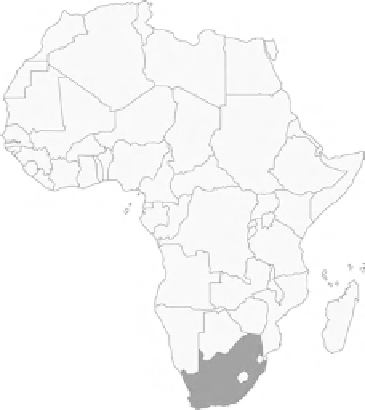Biology Reference
In-Depth Information
263 Capri Italy
Invasive lineage 2
Lineage 1
98
264 Capri Italy
340 Trapani Italy
348 Trapani Italy
31 Ischia Italy
260 Hawaii
Lineage 3
4 Knysna S Africa
5 Knysna S Africa
10 Naples Italy
Lineage 4
A. armata
81
24 Naples Italy
32 Ischia Italy
261 Hawaii
99
51 Hawaii
55 Hawaii
70 Hawaii
372 Isla Perico Panama
35 Hawaii
79
419 French Polynesia
A. taxiformis
110 Tenerife Canary Is
76
80 Tenerife Canary Is
100
496 Barbara Lebanon
258 Sao Paolo Brasil
259 Sao Paolo Brasil
490 Scottburgh S Africa
73
422 Puerto Rico
89
421 Puerto Rico
100
367 Isla Naos Panama
997 Hawaii
96
368 Isla Naos Panama
483 Sri Lanka
E762 Sydney Australia
6 Tsitsikamma S Africa
124 Marceille France
130 Marceille France
233 Albuleira Portugal
E761 Sydney Australia
A. armata
100
228 Albuleira Portugal
500 Cape town S Africa
0.03
Fig. 12.1
Molecular phylogeographic approach modified from Bolton et al. (
2011
) to elucidate
multiple cryptic introductions of morphologically nearly identical lineages and species
(gametophytes and tetrasporophytes) of the red seaweed genus Asparagopsis from specimens
collected in South Africa. Both the Indo-Pacific lineage 2 of
A. taxiformis
and
A. armata
constitute
notorious invasive species. The highly informative mitochondrial
cox
2-3 intergenic spacer has
been deployed in this case. Sequences from previously identified specimens belonging to the five
ESUs, collected worldwide and of known origin, are merged with sequences from specimens
collected in the study area (
gray circles
) to produce a robust phylogeny and reproduce the two-
species genealogical history. From the latter, the identity of each of the target cryptic specimens is
revealed. The superimposed geographical information on the phylogram will indicate “which
target ESU is where.” The level of sequence similarity between sequences of known geographical
origin and the target sequences will indicate the source population. Following analyses, unclassi-
fied specimens (
gray circles
) are successfully identified (
colored circles
) at the species and lineage
levels; lineages and species are finally associated with a geographical location
12.3.1 Relevant Taxonomic Units in Seaweeds Molecular Ecology
Levels and patterns of local marine biodiversity fluctuate, in part due to the
exchange of biota among bioregions. In recent years, however, remarkable changes
in biodiversity have been revealed at the subspecies level. Molecular techniques in
algal systematics are critical to define new relevant units of biological organization
for ecological surveys and biodiversity estimates (Box
12.1
). These taxonomic
units in the vast majority of the cases do not correspond to the traditional species



















































































